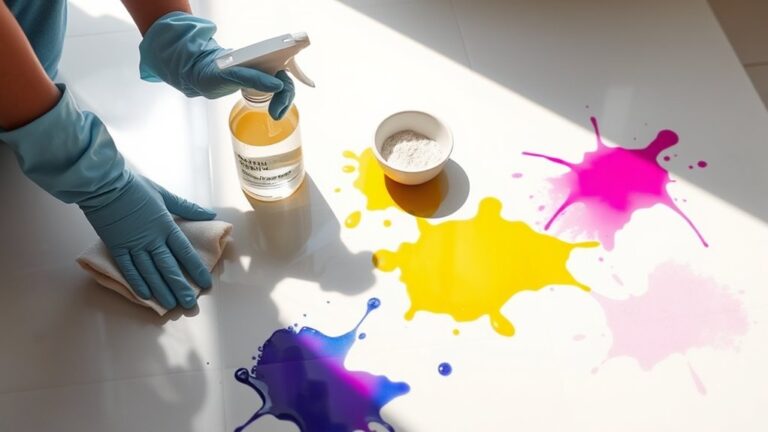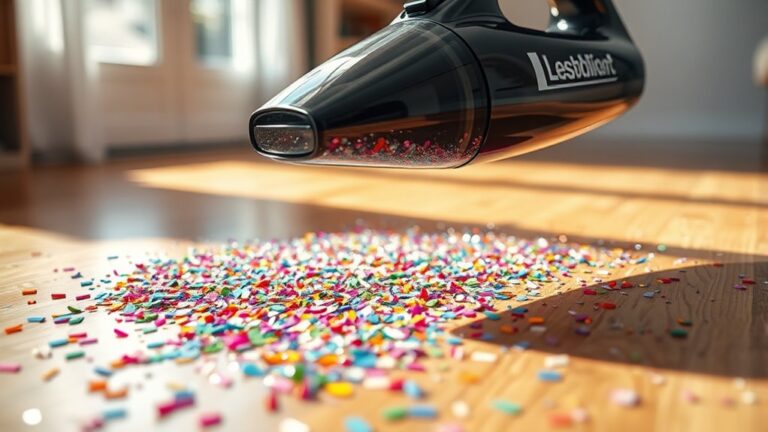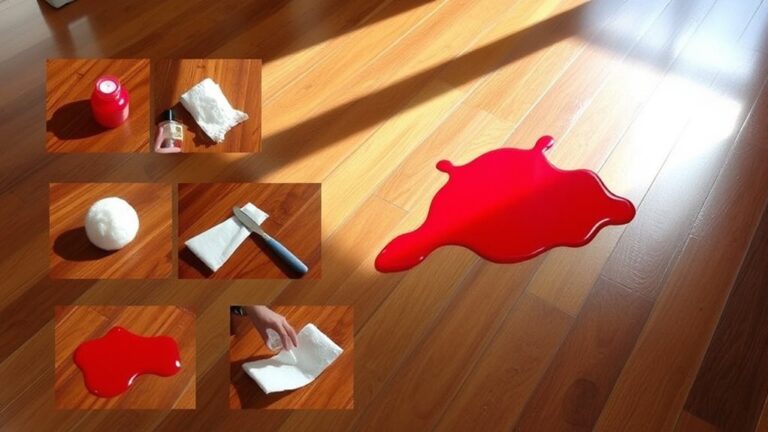For effective waterproof floor solutions in public restrooms, consider materials like vinyl tiles, rubber flooring, or sealed ceramic tiles. These options resist moisture, support slip resistance, and simplify cleaning, thereby minimizing health risks. Regular maintenance, such as sweeping and spot cleaning, enhances longevity and hygiene. While vinyl is often the most cost-effective initially, evaluate long-term durability and maintenance costs for each material. Confirm proper installation by evaluating moisture levels and following manufacturer guidelines. Choosing the right waterproof piso not only contributes to a safer environment but also enhances user experience. There's more to discover about optimizing restroom flooring solutions.
Importance of Waterproof Flooring
Waterproof flooring is vital in public restrooms due to the constant exposure to moisture and spills. When you consider the high traffic these areas experience, effective moisture control becomes an important factor in maintaining safety and hygiene. Water accumulation can lead to mold and bacteria growth, posing health risks to users. Choosing waterproof flooring helps mitigate these issues by preventing liquid penetration, ensuring a cleaner environment.
Moreover, slip resistance is another key aspect to focus on. Wet surfaces are notoriously slippery, increasing the risk of falls, which can result in serious injuries. By selecting flooring materials specifically designed for slip resistance, you're providing an additional layer of safety for restroom users. Textured surfaces or coatings can enhance grip, even when wet, thereby reducing the likelihood of accidents.
In addition to safety benefits, waterproof flooring also simplifies cleaning and maintenance. Non-porous materials resist staining and allow for easy sanitation, which is essential in public restrooms. Regular cleaning protocols can be executed with minimal effort, helping maintain a hygienic space for all users.
Ultimately, the importance of waterproof flooring in public restrooms cannot be overstated. By prioritizing moisture control and slip resistance, you're not only safeguarding the well-being of restroom visitors but also extending the lifespan of the flooring itself. Investing in the right flooring solutions is a proactive step towards creating a safer and more hygienic environment in public facilities.
Common Waterproof Flooring Materials
When selecting flooring for public restrooms, it is essential to take into account various materials that offer waterproof properties. Among the most popular choices are vinyl tiles, which provide a durable and cost-effective solution. They're easy to install and maintain, making them a favorite for high-traffic areas.
Rubber flooring is another excellent option, known for its slip-resistant qualities and resilience against water damage. It's particularly beneficial in environments where safety is a priority. Ceramic options, while generally more rigid, can also be waterproof when properly sealed, offering a wide range of aesthetic choices.
If you're considering laminate choices, be aware that while many options have a water-resistant layer, they might not be entirely waterproof. For areas prone to heavy moisture, epoxy coatings can be applied over concrete finishes to create a seamless, watertight barrier. This solution is perfect for ensuring long-lasting protection against leaks and spills.
Luxury vinyl is a premium alternative that combines visual appeal with waterproof capabilities, often mimicking natural materials like wood or stone. Finally, linoleum sheets are an eco-friendly choice that can withstand moisture when properly sealed, providing both durability and a variety of design options.
Benefits of Waterproof Flooring
Waterproof flooring offers significant advantages for public restrooms, primarily in durability and longevity. You'll find that these materials withstand heavy foot traffic and resist water damage, which means lower replacement costs over time. Additionally, their easy maintenance and hygiene benefits help guarantee a cleaner, more sanitary environment for users.
Durabilidad y longevidad
One of the key advantages of waterproof flooring is its exceptional durability, particularly in high-traffic environments like public restrooms. These floors are engineered to withstand constant wear and tear, ensuring they remain functional and aesthetically pleasing over time. The wear resistance of waterproof flooring greatly reduces the likelihood of scratches and dents, which can compromise safety and hygiene.
In addition to their physical resilience, waterproof floors are designed to resist moisture, preventing issues like mold and mildew. This is especially important in public restrooms, where sanitation is a top priority. By choosing durable flooring solutions, you're not just enhancing safety; you're also minimizing the environmental impact associated with frequent replacements and repairs.
Investing in long-lasting waterproof flooring means fewer resources are consumed over the product's lifecycle. You'll benefit from lower maintenance costs and reduced downtime, as these floors require less frequent replacement. Ultimately, the durability and longevity of waterproof flooring make it a smart choice for public restrooms, ensuring a safe, clean, and efficient environment for all users.
Easy Maintenance Requirements
Amid the demands of maintaining public restrooms, easy maintenance requirements stand out as a significant benefit of waterproof flooring. These surfaces simplify your cleaning techniques, allowing for quicker response times during routine inspections. With waterproof materials, you won't have to worry as much about stains or moisture damage, making your job easier and safer.
Here's a breakdown of the maintenance benefits:
| Beneficio | Descripción |
|---|---|
| Quick Cleaning | Waterproof floors can be cleaned with minimal effort using standard cleaning supplies. |
| Resistencia a las manchas | These surfaces resist stains, reducing the frequency of deep cleaning. |
| Control de humedad | They prevent moisture absorption, eliminating mold and mildew growth. |
| Long-lasting Durability | Waterproof flooring maintains its appearance longer, requiring less frequent replacements. |
Hygiene and Sanitation Benefits
Ensuring hygiene and sanitation in public restrooms is essential, and waterproof flooring plays a key role in achieving this standard. One of the primary benefits of waterproof flooring is its inherent germ resistance. Unlike traditional flooring materials, waterproof options minimize the accumulation of moisture, which is a breeding ground for bacteria and mold. By preventing water infiltration, these surfaces considerably reduce the risk of germ transmission, creating a safer environment for users.
Additionally, waterproof flooring aids in effective odor control. With a non-porous surface, spills and waste don't seep into the flooring, which means odors are less likely to linger. This characteristic is crucial in high-traffic areas where unpleasant smells can deter visitors and reflect poorly on facility management.
Regular cleaning of waterproof flooring is straightforward, ensuring that sanitation protocols are easily maintained. The combination of germ resistance and odor control not only enhances the restroom's hygiene but also contributes to a more pleasant experience for users. By investing in waterproof flooring, you're taking an important step towards ensuring that your public restroom remains clean, safe, and welcoming.
Consideraciones de instalación
When planning the installation of waterproof flooring in public restrooms, several key factors come into play that can greatly impact both performance and longevity. First, you'll need to conduct a thorough substrate moisture evaluation. This step is essential, as excess moisture can lead to flooring failure over time. Use moisture meters to assess the substrate's condition and verify it meets the manufacturer's specifications before proceeding.
Next, focus on effective floor preparation techniques. This involves cleaning the surface to remove any debris, oils, or existing coatings that could interfere with adhesion. If you're working with a concrete substrate, consider grinding or shot blasting to achieve a suitable surface profile, which enhances adhesion and overall performance.
Additionally, take into account any existing plumbing or electrical installations that may affect the layout of your flooring. Proper planning can prevent complications during installation and guarantee that all components remain accessible for future maintenance.
Consejos de mantenimiento y cuidado
Proper maintenance of waterproof flooring in public restrooms is vital for sustaining its integrity and appearance over time. To achieve this, you'll need to adopt effective cleaning techniques and preventive measures. Regular cleaning not only enhances aesthetics but also guarantees safety by eliminating slippery residues.
Start with routine sweeping or vacuuming to remove dirt and debris. This prevents scratches and maintains the floor's surface quality. For deeper cleaning, use a damp mop with a pH-neutral cleaner specifically designed for your flooring type. Avoid harsh chemicals that can degrade the waterproof layer. Rinse the mop frequently to avoid spreading dirt and grime.
Spot cleaning spills immediately is imperative. Use absorbent materials to soak up any liquid before it penetrates the seams, which can lead to moisture damage. Additionally, consider implementing a regular schedule for deep cleaning, ideally once a week, to uphold hygiene standards and eliminate potential bacteria.
Preventive measures play a significant role in prolonging the life of your waterproof flooring. Installing mats at entrances helps trap moisture and dirt before they reach the floor. Encourage users to report any maintenance issues promptly to avoid escalated damage.
Lastly, periodically inspect the flooring for signs of wear or damage. Addressing minor issues immediately can prevent costly repairs down the line. By prioritizing these maintenance and care tips, you'll help guarantee that your public restroom's flooring remains safe, functional, and visually appealing for all users.
Cost Comparison of Options
When evaluating waterproof floor solutions for public restrooms, you need to contemplate initial installation costs alongside long-term maintenance expenses. Durability and lifespan also play vital roles in determining the overall value of each option. By analyzing these factors, you can make a more informed decision that aligns with your budget and facility needs.
Initial Installation Costs
The choice of waterproof flooring for public restrooms involves a significant investment that varies across materials and installation methods. When conducting a budget analysis, it's vital to take into account the initial installation costs associated with each option. Vinyl, for instance, often presents a lower upfront expense due to its quick installation process. On the other hand, tile may have higher material costs and require more labor, impacting the overall budget.
Installation factors such as surface preparation, adhesive types, and curing times can also affect costs. If the existing substrate needs repairs or leveling, this can further increase your expenses. Additionally, some materials, like rubber flooring, may offer enhanced slip resistance and durability, justifying their higher initial costs.
Choosing the right waterproof flooring is important for ensuring safety and longevity in public restrooms. It's not just about the initial outlay; it's about finding a balance between cost and performance. Carefully weighing these installation factors against your budget will help you make a well-informed decision that meets safety standards while staying within financial constraints.
Long-Term Maintenance Expenses
Regular maintenance expenses for waterproof flooring in public restrooms can vary considerably based on the chosen material. For instance, vinyl flooring typically requires less upkeep compared to tile or stone, which may need periodic sealing to maintain their waterproof properties. It's vital to factor in these long-term costs when making your selection.
Preventive measures play an important role in minimizing maintenance expenses. Regular cleaning and immediate attention to spills can prevent more significant issues, such as mold growth or structural damage. Implementing a routine inspection schedule not only prolongs the life of your flooring but also enhances safety for users.
When it comes to budget planning, consider both initial installation and future maintenance costs. While some materials may appear more economical upfront, their long-term upkeep could outweigh savings. For example, rubber flooring might have higher initial costs but offers excellent durability and lower maintenance requirements over time.
Ultimately, selecting the right waterproof flooring involves balancing initial investments with ongoing maintenance expenses. By prioritizing preventive measures and effective budget planning, you'll guarantee a safe, cost-effective solution for your public restroom flooring needs.
Durability and Lifespan
Selecting waterproof flooring involves not just maintenance expenses but also durability and lifespan considerations. When you evaluate options, it's important to assess how they perform under various conditions. High-quality materials like vinyl or porcelain tiles often undergo rigorous waterproof testing to guarantee they can withstand moisture without compromising structural integrity.
Durability directly influences lifespan and overall cost-effectiveness. For instance, resilient vinyl flooring typically lasts 10-20 years, while ceramic tiles can exceed 20 years with proper care. However, consider that not all waterproof flooring is created equal; some options may require more frequent replacements due to wear and tear.
It's also vital to examine the flooring performance in high-traffic areas, like public restrooms. Flooring that excels in slip resistance and can handle heavy footfall will ultimately save you money by reducing the need for early replacements and minimizing safety hazards.
Aesthetic Design Choices
When choosing aesthetic design options for waterproof flooring in public restrooms, it is vital to balance functionality with visual appeal. You want a solution that not only withstands moisture but also enhances the overall environment. Color schemes play a significant role in this process. Opt for hues that evoke cleanliness and calmness, like soft blues or greens, which can create an inviting atmosphere. Additionally, consider using brighter accent colors to draw attention to specific areas, such as entrances or signage, guaranteeing safety and navigation.
Texture variations are equally important. Incorporating different textures can help improve slip resistance, an essential factor in high-traffic restroom areas. For instance, matte finishes can reduce glare while providing a safer walking surface. You might also explore embossed patterns that mimic natural materials, offering aesthetic appeal without sacrificing safety.
Furthermore, you should think about the overall design theme of the restroom. A cohesive look can be achieved by matching the flooring with wall colors, fixtures, and accessories. This harmony not only elevates the restroom's aesthetic but also contributes to a more pleasant user experience.
Lastly, always prioritize easy maintenance. A visually appealing floor that's simple to clean will guarantee long-lasting beauty and hygiene. By thoughtfully selecting color schemes and texture variations, you can create a waterproof flooring solution that meets safety standards while enhancing the restroom's aesthetics.
Preguntas frecuentes
How Long Does Waterproof Flooring Typically Last in High-Traffic Areas?
When considering waterproof flooring in high-traffic areas, you can expect a lifespan of 10 to 30 years, depending on the material and maintenance practices. Regular cleaning and prompt repairs can enhance durability. While installation costs vary, budgeting for quality materials can save you money in the long run. Always prioritize safety in your choice, ensuring the flooring meets slip resistance standards, especially in environments where moisture is prevalent.
Can Waterproof Flooring Be Installed Over Existing Flooring?
You'd think installing waterproof flooring over existing flooring would be a simple task, right? Well, it can be, but it really depends on the installation methods and flooring compatibility. If your current floor is in good shape, many options allow for this kind of installation. However, always check for any potential issues, as improper layering could compromise safety and performance in high-traffic areas. So, make certain you choose wisely!
Are There Specific Brands Recommended for Public Restrooms?
When considering specific brands for flooring, it's essential to look at brand comparisons to evaluate durability, slip resistance, and maintenance. Brands like Armstrong and Mohawk offer reliable options. For installation tips, make sure the surface is clean and dry, and follow the manufacturer's guidelines for best results. Always prioritize safety features, especially in high-traffic areas, as the right flooring can greatly reduce slip hazards and enhance overall functionality in any environment.
What Are the Environmental Impacts of Waterproof Flooring Materials?
When considering waterproof flooring materials, it's essential to examine their environmental impacts. You should look into sustainability considerations, such as the sourcing of materials and their lifecycle. Many options now offer recycling possibilities, reducing waste. Additionally, some materials may release harmful chemicals during production, so prioritize those with low VOC emissions to guarantee safety. By choosing wisely, you can minimize the ecological footprint while maintaining a safe environment for everyone.
How Can I Ensure Slip-Resistance in Waterproof Flooring?
To guarantee slip-resistance in waterproof flooring, focus on the surface texture. Choose materials with a textured finish that enhances grip, especially in wet conditions. Regular maintenance is essential; clean the floors frequently to prevent slippery buildup from soap or water. Also, consider applying anti-slip treatments periodically to improve safety. By prioritizing these aspects, you'll create a safer environment for everyone, minimizing the risk of slips and falls.




